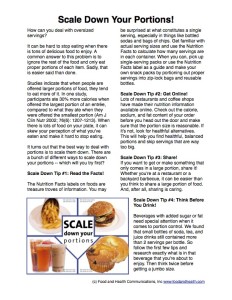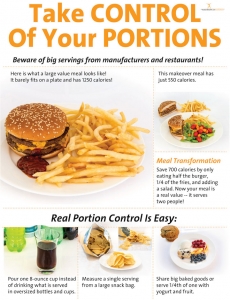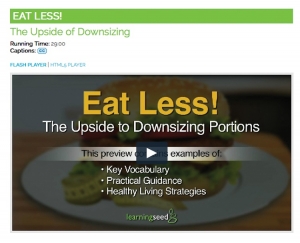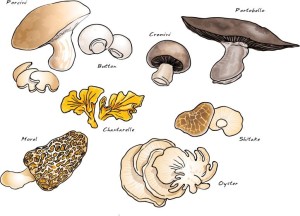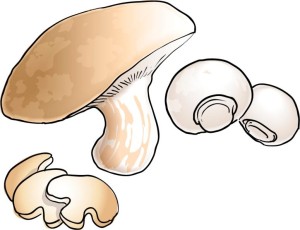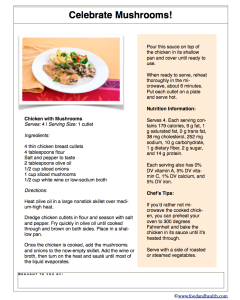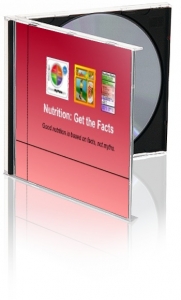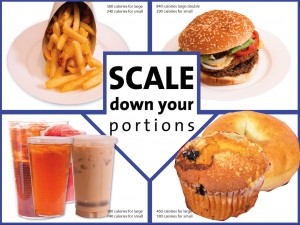 It’s time for a dispatch from inside the Nutrition Education Store! Today I want to share a handout that — until right now — was only available to people who had purchased the Scale Down Your Portions poster. So here it is, in all its glory. How will you use your free copy?
It’s time for a dispatch from inside the Nutrition Education Store! Today I want to share a handout that — until right now — was only available to people who had purchased the Scale Down Your Portions poster. So here it is, in all its glory. How will you use your free copy?
Scale Down Your Portions!
How can you deal with oversized servings?
It can be hard to stop eating when there is a ton of delicious food to enjoy. A common answer to this problem is to ignore the rest of the food and only eat proper portions of each item. Sadly, that’s easier said than done.
Studies indicate that when people are offered larger portions of food, they tend to eat more of it. In one study, participants ate 30% more calories when offered the largest portion of an entrée, compared to what they ate when they were offered the smallest portion (Am J Clin Nutr 2002; 76(6): 1207-1213). When there is lots of food on your plate, it can skew your perception of what you’ve eaten and make it hard to stop eating.
It turns out that the best way to deal with portions is to scale them down. There are a bunch of different ways to scale down your portions — which will you try first?
Scale Down Tip #1: Read the Facts!
The Nutrition Facts labels on foods are treasure troves of information. You may be surprised at what constitutes a single serving, especially in things like bottled sodas and bags of chips. Get familiar with actual serving sizes and use the Nutrition Facts to calculate how many servings are in each container. When you can, pick up single-serving packs or use the Nutrition Facts label as a guide and make your own snack packs by portioning out proper servings into zip-lock bags and reusable bottles.
Scale Down Tip #2: Get Online!
Lots of restaurants and coffee shops have made their nutrition information available online. Check out the calorie, sodium, and fat content of your order before you head out the door and make sure that the portion size is reasonable. If it’s not, look for healthful alternatives. This will help you find balanced portions and skip servings that are way too big.
Scale Down Tip #3: Share!
If you want to get or make something that only comes in a large portion, share it! Whether you’re at a restaurant or a backyard barbecue, it can be easier than you think to share a large portion of food. And, after all, sharing is caring.
Scale Down Tip #4: Think Before You Drink!
Beverages with added sugar or fat need special attention when it comes to portion control. We found that small bottles of soda, tea, and juice drinks still contained more than 2 servings per bottle. So follow the first few tips and research exactly what is in that beverage that you’re about to enjoy. Then think twice before getting a jumbo size.
What do you think? If you like what you see, get your very own PDF copy of the Scale Down Your Portions handout, for free!
And here are some more portion resources from the Nutrition Education Store! Remember, we’re here to help you look your very best, right now!

Portion Control Handout



